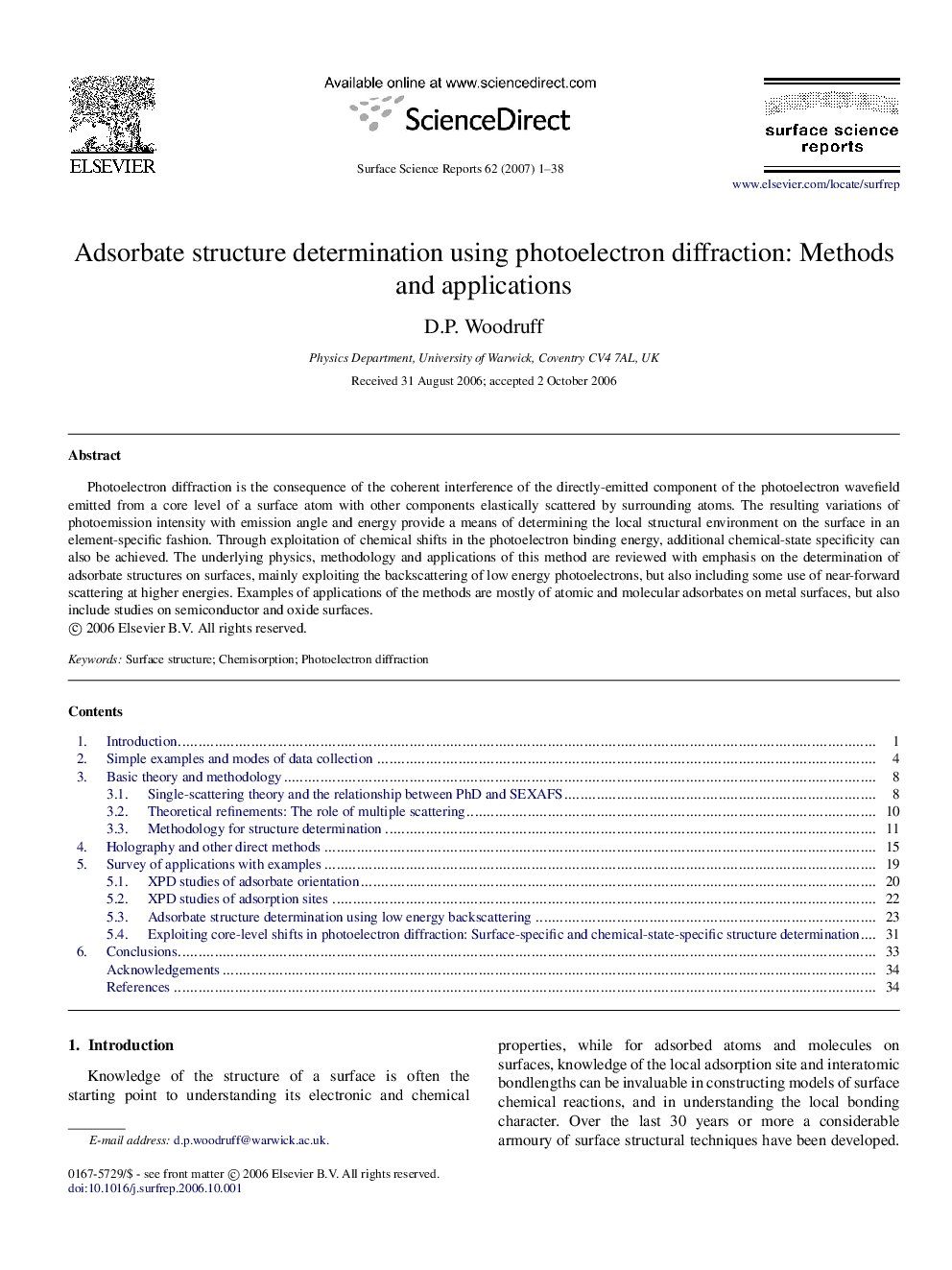| Article ID | Journal | Published Year | Pages | File Type |
|---|---|---|---|---|
| 7845669 | Surface Science Reports | 2007 | 38 Pages |
Abstract
Photoelectron diffraction is the consequence of the coherent interference of the directly-emitted component of the photoelectron wavefield emitted from a core level of a surface atom with other components elastically scattered by surrounding atoms. The resulting variations of photoemission intensity with emission angle and energy provide a means of determining the local structural environment on the surface in an element-specific fashion. Through exploitation of chemical shifts in the photoelectron binding energy, additional chemical-state specificity can also be achieved. The underlying physics, methodology and applications of this method are reviewed with emphasis on the determination of adsorbate structures on surfaces, mainly exploiting the backscattering of low energy photoelectrons, but also including some use of near-forward scattering at higher energies. Examples of applications of the methods are mostly of atomic and molecular adsorbates on metal surfaces, but also include studies on semiconductor and oxide surfaces.
Related Topics
Physical Sciences and Engineering
Chemistry
Physical and Theoretical Chemistry
Authors
D.P. Woodruff,
